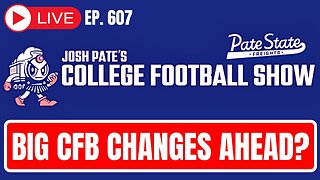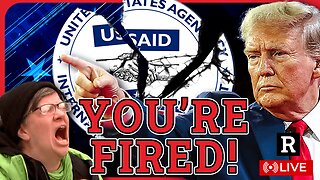Premium Only Content

9/11: An Architect's Guide | Part 1: World Trade Center 7 (1/7/21 webinar - R Gage)
9/11: An Architect’s Guide | Part 1 - World Trade Center 7
Course Number: AE911-AAG-OD1
Live three-part webinar series. Each part is about 1 1/2 hours long
Architects & Engineers for 9/11 Truth is a 501(c)(3) nonprofit organization dedicated to conducting research and providing education about the complete destruction of the three World Trade Center skyscrapers, our courses provide the technical knowledge and analytical framework with which to evaluate the most likely cause of those building failures.
Course Description:
In Part 1 of “9/11: An Architect’s Guide,” Richard Gage, AIA, provides an overview of the most important evidence regarding the destruction of World Trade Center Building 7 (WTC 7), a 47-story high-rise that was not struck by an airplane.
The damage WTC 7 suffered from the collapse of the North Tower was found to be inconsequential. It had fires that were similar to those that have occurred previously in high-rise buildings. Yet it fell symmetrically into its own footprint in the manner of a typical controlled demolition.
In 2008, the National Institute of Standards and Technology (NIST) concluded that WTC 7’s destruction was caused by normal office fires that burned “at temperatures hundreds of degrees below those typically considered in design practice for establishing structural fire resistance ratings.”
Is NIST’s explanation for this unprecedented structural failure valid? Decide for yourself after watching this informative one-hour presentation. Using the information presented, you will be able to evaluate which of the two hypotheses — fire-induced failure or controlled demolition — is more consistent with the evidence.
Learning Objectives:
Participants will be able to:
1. Describe the characteristics of building fires and the aspects of high-rise design that contribute to make fire-induced failure in steel-framed high-rise buildings a rare occurrence.
2. Recognize the distinct features associated with fire-induced failure and the distinct features associated with the procedure of controlled demolition.
3. Describe step-by-step the series of structural failures that the National Institute of Standards and Technology found to be the most likely cause of the collapse of World Trade Center Building 7.
4. Analyze the physical evidence and dynamics of Building 7’s collapse according to how consistent they are with the competing hypotheses of fire-induced failure and controlled demolition.
For more information: visit http://AE911Truth.org
and http://WTC7Evaluation.org
-
 1:00:35
1:00:35
Architects & Engineers for 9/11 Truth
1 year ago“Israel’s 9/11” AND the Original One
3.2K5 -
 LIVE
LIVE
Precision Rifle Network
1 day agoS4E4 Guns & Grub - You Can't Handle The Truth!
427 watching -
 DVR
DVR
Flyover Conservatives
21 hours agoSick, Tired, & Foggy? The TRUTH About What’s Living in Your Gut! - Dr. Jason Dean | FOC Show
8.53K -
 34:24
34:24
Kimberly Guilfoyle
8 hours agoFaith, Fairness, and a Better Future: Live w/ Joy Pullmann & Elizabeth Mitchell | Ep.194
116K28 -
 1:12:20
1:12:20
Josh Pate's College Football Show
6 hours ago $0.28 earnedBig CFB Changes Coming | DeBoer Fixing Alabama | Signing Day Reaction | OhioSt vs Michigan Shift
17.4K1 -
 59:39
59:39
The StoneZONE with Roger Stone
2 hours agoEXCLUSIVE: James O'Keefe Talks to Roger Stone About Dropped Charges Against Him | The StoneZONE
17.9K1 -
 DVR
DVR
megimu32
2 hours agoON THE SUBJECT: Comedian LOSES It At Heckler!
10K1 -
 1:17:13
1:17:13
Redacted News
6 hours agoTRUMP IS BURNING IT ALL DOWN AND DEMOCRATS WANT HIM IMPEACHED AGAIN, USAID ROT GOES DEEP | Redacted
156K357 -
 52:23
52:23
Candace Show Podcast
7 hours agoUPDATE! Taylor Swift Goes Full Dragon Against Blake Lively | Candace Ep 144
132K193 -
 LIVE
LIVE
VOPUSARADIO
23 hours agoPOLITI-SHOCK! KILL THE DEEP STATE!! PLUS: 3 SPECIAL GUESTS!
100 watching